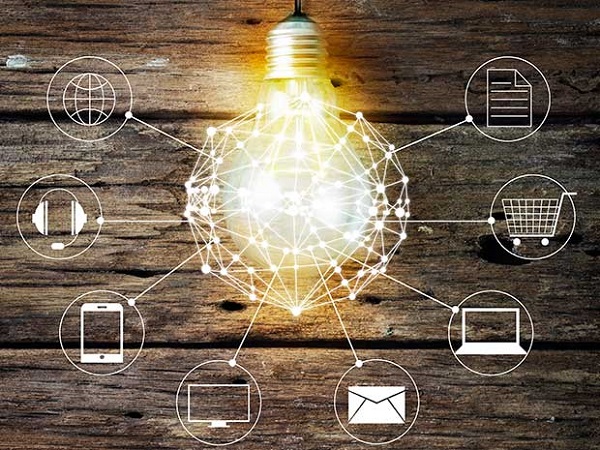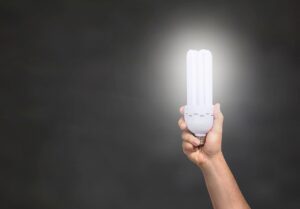The evolution of lighting has revolved around reducing lighting costs and energy savings, and the next step in this evolution is IoT lighting. By 2026, it has been predicted that the IoT lighting industry’s value is going to grow to a substantial 4.5 billion USD.
However, despite its potential, many are still unfamiliar with IoT lighting and its benefits. If you happen to be one of them, read on. In this post, you will get to know what IoT is, what its role in lighting is, and how it is beneficial.
What is IoT?
IoT or the Internet of Things is a description of a network consisting of physical objects. These physical objects, embedded with technologies, software, and sensors, can connect and exchange information with other systems and devices. This information exchange is facilitated by the objects’ connectivity to the internet. Expectations are that by 2025, the number of connected IoT devices in the world will grow to a whopping 22 billion.
It has been possible for the IoT idea to become a reality due to a variety of factors, such as:
- Greater affordability and reliability of sensors, which makes them more accessible for manufacturers
- Increased availability of cloud infrastructure, which allows both consumers and businesses to scale up
- Internet network protocols that have made it easier for sensors to connect to cloud platforms
- Advances in conversational artificial intelligence, which can be seen in digital personal assistants like Siri, Alexa, and Cortana
Understanding IoT in lighting
IoT in lighting is all about making lighting ‘smart’ and its purpose is two-fold – to save more energy and at the same time, provide more lighting efficiency.
Here’s how IoT smart lighting works:
- The lights have wireless switches, which eliminate the necessity of wiring switches to fixtures directly.
- IoT smart lights and bulbs can be connected to networks, which facilitates the ability to control and monitor them from the cloud.
- Users can manage the lights from either mobile apps or the web.
- Both individual and group lights can be managed on the basis of factors such as times of day, external light levels, and room occupancy.
- Users may also have the option of changing the lights’ colours or dimming them depending on the available features.
LED lighting: Leading the IoT lighting revolution
While most of the talk surrounding IoT lighting revolves around internet connectivity, the fact is that it wouldn’t have been possible without LED lighting. Compared to conventional bulbs, LED bulbs can produce much more light but they do this much more efficiently. Also, there’s significantly less heat radiation from the bulbs.
LED lights are inclusive of semiconductors, which help them produce light. These semiconductors, apart from producing light, also allow LED lights to be digitally controlled. Last but not least, LED lighting retrofit is a viable option that makes existing lighting fixtures compatible with new LED lights.
The following statistics are reflective of why LED lighting should be the go-to choice for both businesses and residences to switch to smart lighting:
- In comparison with incandescent bulbs, LED lights use less energy (as much as 75%).
- LED lights are more durable and can last up to 25 times more than incandescent bulbs.
- They produce limited heat as they emit light in specific directions.
- They offer more in terms of lighting alternatives, i.e., buyers can pick from both cool and warm light options.
IoT lighting: The benefits
It’s time to take a closer look at the benefits that IoT lighting has to offer. The following advantages are set to make IoT lighting the lighting solution of choice globally in the years ahead:
- More energy efficiency and reduction in energy costs: IoT lighting solutions can be turned on/off depending on demand. For instance, if an office space is empty and doesn’t need the lights to be turned on, they can be turned off remotely. In the long run, this can go a long way toward ensuring the efficient use of lights and a significant reduction in electricity bills.
- Round-the-clock, remote convenience: Apps and websites can be used by users to control their lights, irrespective of their location. As long as the user has a smart device and a stable internet connection, the lights can be controlled without any problems. This is especially helpful for people with physical disabilities, who may find it difficult to switch lights on and off manually.
- Mood setting according to preferences: Users can manipulate the brightness and colours of IoT lights according to the mood they want to set in a particular space. For example, the drawing room atmosphere can make way for something that’s more in tune with a lounge setting. Some simple in-app adjustments are all that users would need to achieve this transformation.
IoT lighting in Canada: The present and the future
At the commercial level, IoT lighting is enjoying quite the present, as its adoption continues to grow among businesses. According to reports, 2020 saw more than 80% of Canadian businesses adopt IoT solutions, inclusive of lighting.
By 2026, the smart home market in Canada is projected to grow to a mammoth 3.86 billion USD. From 2022 – 2026, this would mean a revenue increase of around 11.6%. While business adoption of IoT lighting has skyrocketed in recent years, residential adoption is still on the slower side. The reason for this is the fact that IoT lighting solutions are still more expensive than conventional options.
However, even on the residential front, growth is expected and estimates suggest that in 2022, IoT penetration in Canadian households will rise to 31.7%. This is a steady jump up from an estimated 27.9% in 2021.
Conclusion
There are promising signs in Canada in terms of how the masses view IoT lighting along with other smart home products. The majority of the country’s residents are interested in adopting IoT lighting and smart home solutions in the near future.
The challenge for the government and private companies is to make manufacturing and production more affordable. This would directly impact the prices that end-users have to pay for the products and encourage more widespread adoption.




































